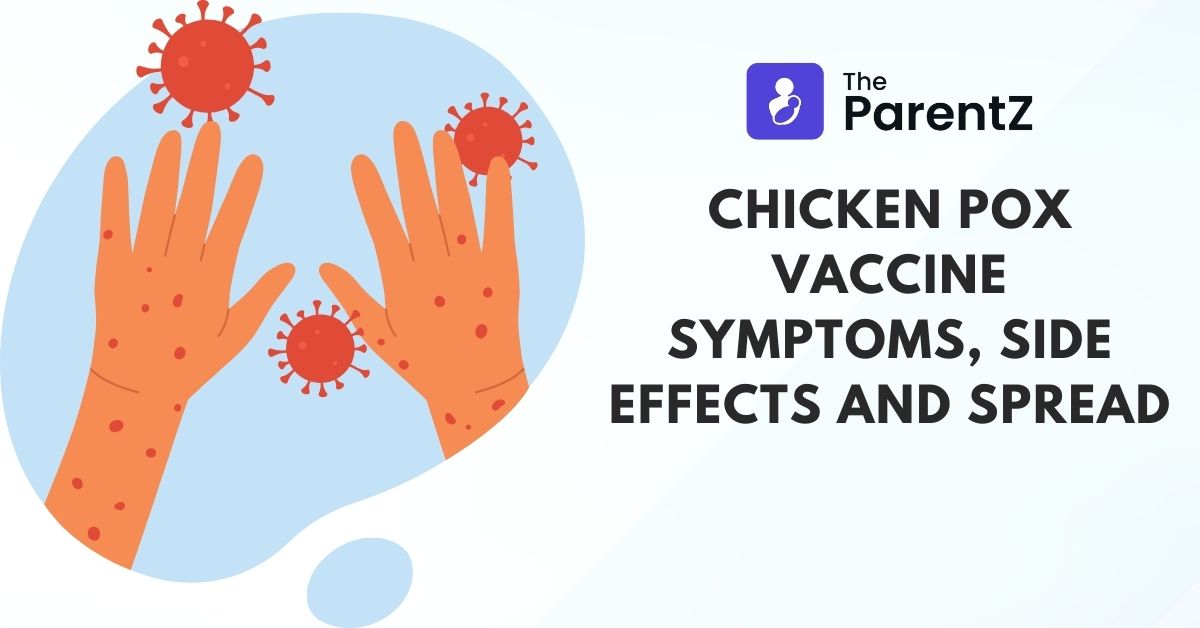When to give a vaccine shot?
Chicken pox vaccine is a live attenuated vaccine and is available singly or in a combination as MMRV ( Mumps Measles Rubella Varicella). Chicken pox vaccine has not yet been introduced in the national immunisation schedule of all countries but you should consider vaccinating your child nonetheless.
Varicella vaccine can be given as a single dose or in a double dose schedule. Double doses are definitely recommended for all older children over 13 years of age. Young children aged 12 months to 12 years should have a gap of 3 months between two doses while older children over 13 years of age should have a gap of 4-6 weeks. Combination MMRV can be given to children between ages 9 months to 2 years. The minimum interval between two doses is 4 weeks.
Why should the shot be given?
Chickenpox is a very common viral illness of childhood. Vaccination should be considered to protect your child from infection. Vaccination against chickenpox provides immunity of around 10 years in duration. Vaccination also markedly reduces the severity of the infection if your child does develop chickenpox even after vaccine administration.
What are the side effects of the vaccine?
Side effects are extremely rare for vaccines but they exist nonetheless. Side effects which may develop with chicken pox vaccine are:
- Some children may develop a rash in their body which resolves on its own. The rash may be diffuse throughout the body or milder with only 4-5 lesions present.
- Local reactions may develop. This includes pain, swelling and redness in the area where the vaccine was injected. This is not a cause for concern and it will resolve spontaneously over the next few days.
- Fever may develop post vaccination. Fever can be treated at home itself with antipyretics such as paracetamol being given. This thing to consider during giving your young child medicine is that the dose should be correct according to the age and weight of the child and overdosage has to be avoided.
- Anaphylaxis or an allergic reaction to the vaccine may occur. It can be recognised early by reddening of skin and generalised itching followed by difficulty breathing. A child who develops anaphylaxis should be brought to the hospital immediately. It can be managed by giving a shot of anti-allergic and anti-inflammatory agents immediately.
What is chickenpox?
Chickenpox is a highly infectious viral disease of childhood. It usually affects children under 10 years of age. Chickenpox is caused by a Varicella Zoster virus.
What are symptoms of chickenpox?
Chicken presents a wide range of symptoms depending on the severity of the disease. This varies from a scattered rash on the body to a high fever with widespread rashes. Most children develop only a mild form of the disease.
Symptoms of a chickenpox infection are:
- Fever : There is a sudden development of fever with shivering and pain. This lasts for around 24 hours.
- Rashes : Rashes are usually the first sign of infection noticed in children. Rashes start appearing on the day after fever develops. It first develops on the torso followed by limbs and face. It is more abundant on the torso than limbs.
- Fever spikes every time a new batch of rashes develop
- Rash starts to crust and scab after 4-7 days.
Is chickenpox a serious ailment?
Chicken pox is a seasonal disease with maximum risk of infection during winters. Although it is treatable by medications, it has a number of complications which may develop throughout the life of an individual. In India alone, the disease affects tens of thousands children every year with Kerala reporting the maximum number of cases.
How does chicken pox spread?
Chicken pox virus spreads from person to person by droplets. It spreads on close personal contact with an infected person. Coughing and sneezing of an infected individual releases droplets which may contain the virus and spreads on coming into contact with the conjunctiva of the eye or being inhaled during respiration. Chicken pox can also spread to a newborn if the mother was infected during pregnancy.








Be the first one to comment on this story.